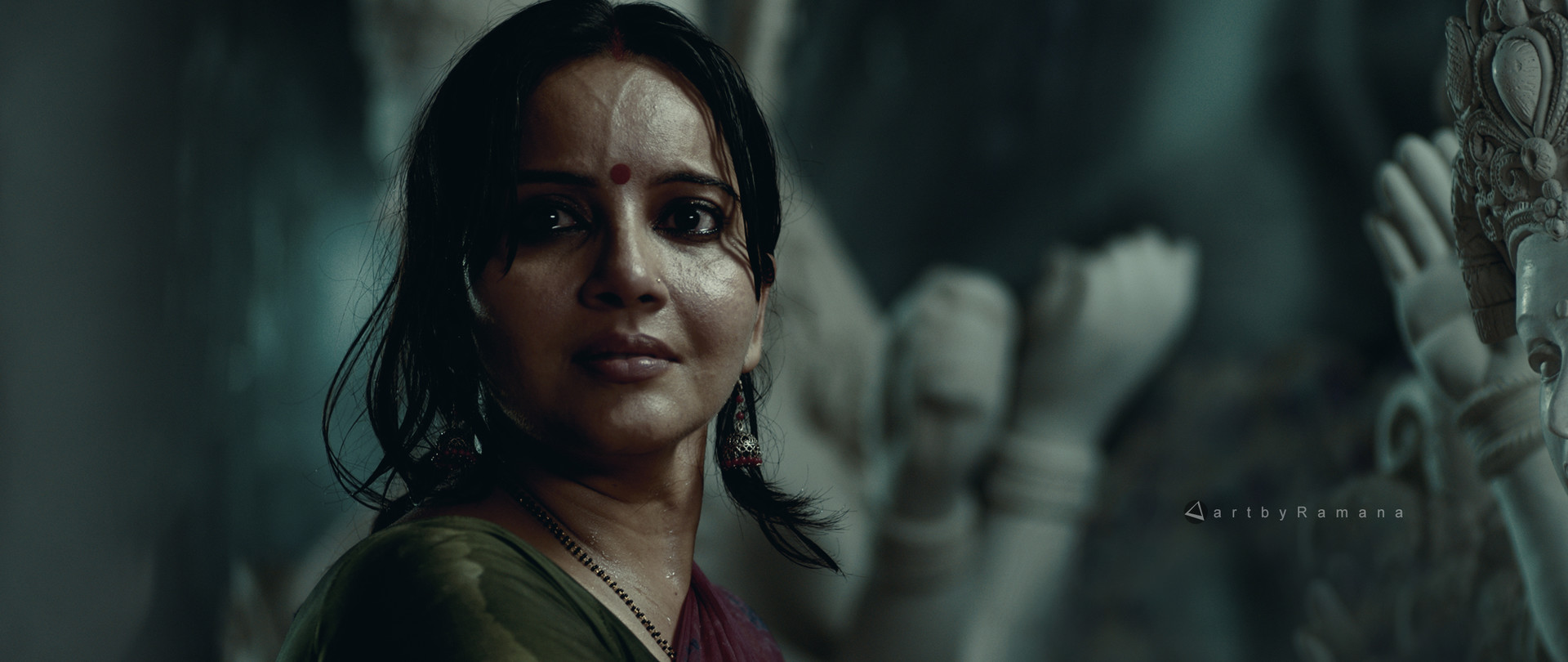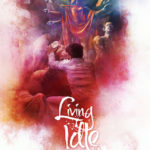Living Idle



Living Idle is an allegorical short film delineating the repercussions of an artist’s actions that stem from his abandonment of his conscience. A sculptor who can mould the clusters of clay into the most beautiful of idols fails to see the beauty of his responsibilities towards his family. Drinking with the money saved for the milk and medicine for their daughter the sculptor goes about unrestrained derelict in his duties towards his wife and his child. The film symbolically represents how an idol of Ma Durga punishes the drunken sculptor after he fanatically abuses his wife into yielding to his carnal pleasures with no regard for their crying child.
This film stands on the strongest of the pillars – a powerful story, superlative performances, creative and decisive direction, gripping screenplay. And the story itself has its roots in the most elemental of the characters – a mother protecting her child. The film opens with a woman excoriating her husband of his drinking habit which made him leave her with the responsibility of their daughter alone. The helpless voice that emanates from the mouth of a woman who has to deal with a drunkard husband and raise an infant herself is what makes things real in this film. The shrill quavering voice that is charged with the burden of an emotion, the tears that roll down the woman’s cheek when she disapproves of her husband’s bearing, the cries of the infant unwilling to be lulled by the mother, the distinct sound of the downpour that fills our ears while we hear the sculptor’s wife rebuke – these are just some of many things that make this film an aesthetic piece of intricately detailed art.
A resolute artist working on a Ma Durga idol has no concern for his own family’s needs and on top of that, he misappropriates the money from his wife which is saved for feeding their child to fulfill his drinking habit. One day when he comes home drunk and finds her wife lulling their daughter to sleep. He is consumed by carnal desires and with an animal lust abuses his wife while she tries to keep their daughter from crying. When he crosses all limits of physical abuse and in his brute struggle of forcing his wife into giving into his wishes grabs something off the roof which makes the idol plunge on his back leaving him paralyzed and idle; thus one facet of the title is justified.
We witness the life after the artist is disabled in a wheelchair in his household. Their daughter all grown up and running about the idols when her mother chases her around to feed her. Despite his savage behavior towards her and their daughter, his wife takes great care of his needs. Through such tough times emerges the artist’s wife unscathed and starts to make the idols herself. When a flash of the things he had done to her in the past which made him idle as a consequence occurs, the artist realizes his mistake and cries out the name of Ma Durga in an unintelligible tone of repentance. His wife seeing him guilt-ridden breaks down. The other facet of the title is substantiated by her strong will to hurdle the hardships of her life to stand for her daughter and forgive her husband.
The performances of Anil Mange, Geetanjali Mishra are the soul of this beautifully portrayed story of the elemental nature of a woman’s existence in a man’s life. Ramana, the director who had previously worked in the art department of various prestigious projects like Prince of Persia: The Sands of Time, Puss in Boots, Madagascar 3: Europe’s Most Wanted, and Eega has put great efforts in unfolding such an amazing story with Living Idle. Ayaskant Baral, the cinematographer has done a great job rendering this film the necessary elements that are pivotal to such a storytelling. While the things that are visible on screen have done their job, the sound department completes this film with such meticulous work enhancing the experience of film watching. It is hard not to mention many a time the singular performances of the two actors who lived the story of Living Idle.





